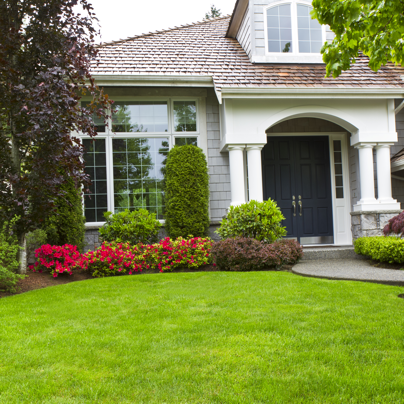 Landscaping your front yard is one of the final finishing touches for every new home owner. Not only can it help make your home more inviting and increase the curb appeal, it can also provide function like privacy, shade, and erosion control. Properly planning your front yard landscaping can help you save time, money and effort while creating a space you love.
Landscaping your front yard is one of the final finishing touches for every new home owner. Not only can it help make your home more inviting and increase the curb appeal, it can also provide function like privacy, shade, and erosion control. Properly planning your front yard landscaping can help you save time, money and effort while creating a space you love.
Check Your Neighbourhood Guidelines
Before you start planning your front yard landscaping be sure to check what the architectural guidelines require you do. Every home builder will collect a landscape deposit which is only returned once your landscaping has been approved. The last thing you want to have to do is to rip out all the landscaping you’ve put in and redo it so it meets the guidelines. That’s an incredible waste of time and money!
Planting Your Lawn
There’s a few different ways to start your lawn but the most common ways are to plant grass seed or to lay sod. While seeds offer a wide range of grass types and is generally cheaper, most people lay sod because it is very fast and creates an instant high quality, weed-free new lawn. Also be sure to check with your architectural guidelines as most require the front yard to be sod, not seed.
The first step to getting that new lawn in is measuring the area you’ll need to sod. Simply multiply the width of the area times the length of the area to get your total square footage. If your lawn has an irregular shape, you may want to consider adding an additional 5% to your total measurement, just to be safe! Check out this post on what you need to know about sod for more details.
Planting Trees
Trees are one of the backbones of any landscape. They give it stature and structure. Trees are also as varied as nature itself. Deciduous trees (trees that lose their leaves) are commonly used in landscaping and include birch, ash, and chestnuts. Coniferous trees (evergreen trees) are trees with needles and cones. Examples include fir, pine, spruce and junipers. A lot of these trees can also be used for hedges.
Some of the best trees for the prairies include:
-
- Amur maple
- Paper birch
- Colorado spruce (sometimes called a blue spruce)
- Ponderosa pine
- Quaking aspen
- Golden weeping willow
- American mountain ash
- and more!
Talk with staff at the nursery and ask them what recommendations they might have for your front yard landscaping project. They’ll also be able to tell you exactly how to plant and care for your trees.
Planting Shrubs
You may think that shrubs are simply green bushes. Eventually, they can become much more. They come in different sizes and shapes. No matter what landscape effect you are trying to obtain, there is always a shrub that will fit the bill perfectly.
You can use creeping shrubs such as junipers for ground cover. At the same time, you can use low bushy shrubs such as potentilla and spirea to blend nicely into the front or flower garden. Rounded and larger shrubs can be combined into clusters to create privacy and define space. More compact cultivars that grow four feet high can be used around the house without pruning. If local wildlife is sometimes a problem, you can protect your shrubs from hungry critters using fencing or wire mash.
Having a beautifully landscaped front yard can set your home apart from all the others around you. Just follow these landscaping tips and make sure to check your architectural guidelines before you get started. Taking some time to properly plan your project will save you time, effort and energy and help you create a landscape you’re proud of.
Image courtesy of DepositPhotos.com, @ Tom Baker
